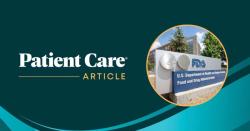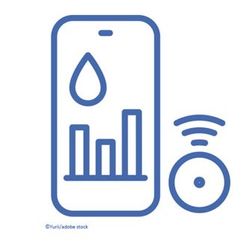© 2025 MJH Life Sciences™ , Patient Care Online – Primary Care News and Clinical Resources. All rights reserved.
Statin Therapy: The Current Pros and Cons
The benefits of statin therapy no longer stand uncontested as they did early in the life cycle of the class. The pro and con camps each can point to science, but in the end it's about personalized medicine.
Statin therapy continues to be a bugaboo of preventive medicine. The risk to benefit ratio is still hotly debated, with some arguing that the risks may outweigh the benefits for some individuals at low risk for cardiovascular disease (CVD). In 2012, the FDA added warnings to statin labels about the risk for hyperglycemia, new-onset diabetes, and cognitive impairment, although many experts believe these adverse effects to be uncommon. Late in 2013, the American Heart Association (AHA) and American College of Cardiology (ACC) issued expanded recommendations on which populations could benefit from the cardiovascular (CV) and cerebrovascular protective effects of statin therapy. The AHA/ACC recommendations identified 4 main groups1:
• People who already have clinical atherosclerotic cardiovascular disease (ASCVD)
• People with LDL above 190 mg/dL
• People with diabetes who are between the ages of 40 and 75 years
• People whose LDL lies between 70 and 189 mg/dL but who do not yet have clinical signs of ASCVD
Evidence on both sides continues to fuel the debate. Below is a brief rundown of the main issues as well as the pros and cons involved. While the issues are well described, consensus remains elusive.
PROS
Primary prevention of atherosclerosis and CVD
The atheropreventive effects of statins continue to be linked to lower risk of premature mortality, cardiovascular events, and stroke. A recent meta-analysis2 described the benefits for primary prevention in patients without established CVD but with CV risk factors,2 although the ASPEN study3 failed to prove a benefit among patients with type 2 diabetes mellitus (T2DM) and elevated LDL.
Cholesterol-lowering effect
Statins lower LDL particularly well, and lowered LDL has been linked to lower risk of heart attack, stroke, and death from CV events in people with and without diabetes. A similar association has not been seen with other medications used to treat cholesterol, ie, fibrates, niacin, and bile acid sequestrants.4
Anti-inflammatory effects
Statins have been linked to reduced C-reactive protein (CRP) and circulating proinflammatory cytokines in people with CV risk factors, independent of LDL. The landmark JUPITER trial5 suggested that when statins were used as primary prevention in otherwise healthy patients with normal lipid levels but elevated CRP, suppression of background inflammation could improve CVD outcomes. Because of their pleiotropic effects, statins have also been investigated for use in other inflammatory disorders, such as multiple sclerosis, rheumatoid arthritis, and Alzheimer disease.6,7
CONS
Myopathy, myalgia, myositis
There is a higher risk of muscular symptoms in women, the elderly, those receiving multiple medications, those with dehydration, and those with renal or hepatic impairment. The symptoms are shown to be dose-related, with every-other-day dosing sometimes helpful. The risk of muscle impairment may be lower with pravastatin and fluvastatin, with fluvastatin perhaps carrying the lowest risk.8
Hyperglycemia
Statin labels now carry FDA-mandated warnings that say the drugs may increase the risk for new-onset T2DM, or increase HbA1C among patients with established T2DM.9
Cognitive decline and memory impairment
These effects are reported to be relatively rare and reversible after cessation of statin therapy. Preliminary evidence indicates that switching to a hydrophilic statin that does not easily cross the blood-brain barrier (pravastatin, rosuvastatin) could be an alternative to the lipophilic statins when cognitive adverse effects are experienced.10
Elevated circulating statin levels
Elevated plasma levels have been seen with concomitant use of gemfibrozil, bile acid sequestrants, and CYP-450 3A4 inhibitors (macrolides, cyclosporine, antifungals, HIV protease inhibitors, some neuroleptics, gingko biloba, and the ever-popular grapefruit juice).
Cancer risk
A possible increased risk of malignancy was seen among the elderly. The PROSPER study found an increase in new cancer diagnoses among people over age 70 taking pravastatin for 3 years, although participants also had decreased mortality from coronary heart disease.11 Other studies have failed to find an association.
Other adverse effects
Headache, GI (nausea, gas, diarrhea), insomnia, rash.
Conclusion
Although much evidence seems to support a role for statins in the prevention of heart disease for high-risk patients, the waters are muddier for patients at lower risk, and for whom risk of statin-related diabetes remains relatively unclear.12 Other adverse effects may be intolerable and lead to discontinuation of therapy-for example, an older patient who develops myopathy that interferes with balance and ambulation.
At the end of the day, an overall package-patient lifestyle, sound clinical judgment, and good doctor-patient communication-may be the best medicine.
References:
- Stone NJ, Robinson J, Lichtenstein AH, et al. 2013 ACC/AHA guideline on the treatment of blood cholesterol to reduce atherosclerotic cardiovascular risk in adults: a report of the American College of Cardiology/American Heart Association Task Force on Practice Guidelines. Circulation. Published online ahead of print November 12, 2013. doi:10.1161/01.cir.0000437738.63853.7.
- Brugts JJ, Yetgin T, Hoeks SE, et al. The benefits of statins in people without established cardiovascular disease but with cardiovascular risk factors: meta-analysis of randomised controlled trials. BMJ. 2009;338:b2376. doi:http://dx.doi.org/10.1136/bmj.b2376.
- Knopp, RH, d’Emden M, Smilde JG, Stuart JP; The Atorvastatin Study for Prevention of Coronary Heart Disease Endpoints in Non-Insulin-Dependent Diabetes Mellitus (ASPEN). Efficacy and safety of atorvastatin in the prevention of cardiovascular endpoints in subjects with type 2 diabetes. Diabetes Care. 2006;29:1478-1485. doi:10.2337/dc05-2415.
- Kearney PM, Blackwell L, Collins R, et al. Cholesterol Treatment Trialists' Collaborators. Efficacy of cholesterol-lowering therapy in 18,686 people with diabetes in 14 randomised trials of statins: a meta-analysis. Lancet. 2008;371:117–125.
- Ridker PM, Danielson E, Fonseca FA, et al. Rosuvastatin to prevent vascular events in men and women with elevated C-reactive protein. N Engl J Med. 2008;359:2195–2207.
- Jain MK, Ridker PM. Anti-inflammatory effects of statins: clinical evidence and basic mechanisms. Nature Rev Drug Discov. 2005;4:977-987. doi:10.1038/nrd1901.
- Antonopoulos AS, Margaritis M, Lee R, et al. Statins as anti-inflammatory agents in atherogenesis: molecular mechanisms and lessons from the recent clinical trials. Curr Pharm Des. 2012;18:1519–1530. doi:10.2174/138161212799504803.
- Holdaas H, Fellstrom B, Jardine A; Assessment of LEscol in Renal Transplantation (ALERT) Study Investigators. Effect of fluvastatin on cardiac outcomes in renal transplant recipients: a multicentre, randomised, placebo-controlled trial. Lancet. 2004;361:2024-2031.
- Simsek S, Schalkwijk CG, Wolffenbuttel BH. Effects of rosuvastatin and atorvastatin on glycemic control in type 2 diabetes-the Corall Study. Diabet Med. 2012;29:628-631.
- Rojas-Fernandez CH, Cameron JC. Is statin-associated cognitive impairment clinically relevant? A narrative review and clinical recommendations. Ann Pharmacother. 2012;46:549-557.
- Shepherd J, Gerard JB, Murphy MB, et al; PROSPER study group. Pravastatin in elderly individuals at risk of vascular disease (PROSPER): a randomised controlled trial. Lancet. 2002;360:1623-1630. doi:10.1016/S0140-6736(02)11600-X.
- Mihaylova B, Emberson J, Blackwell L; Cholesterol Treatment Trialists' (CTT) Collaborators. The effects of lowering LDL cholesterol with statin therapy in people at low risk of vascular disease: meta-analysis of individual data from 27 randomised trials. Lancet. 2012;380:581–590.



